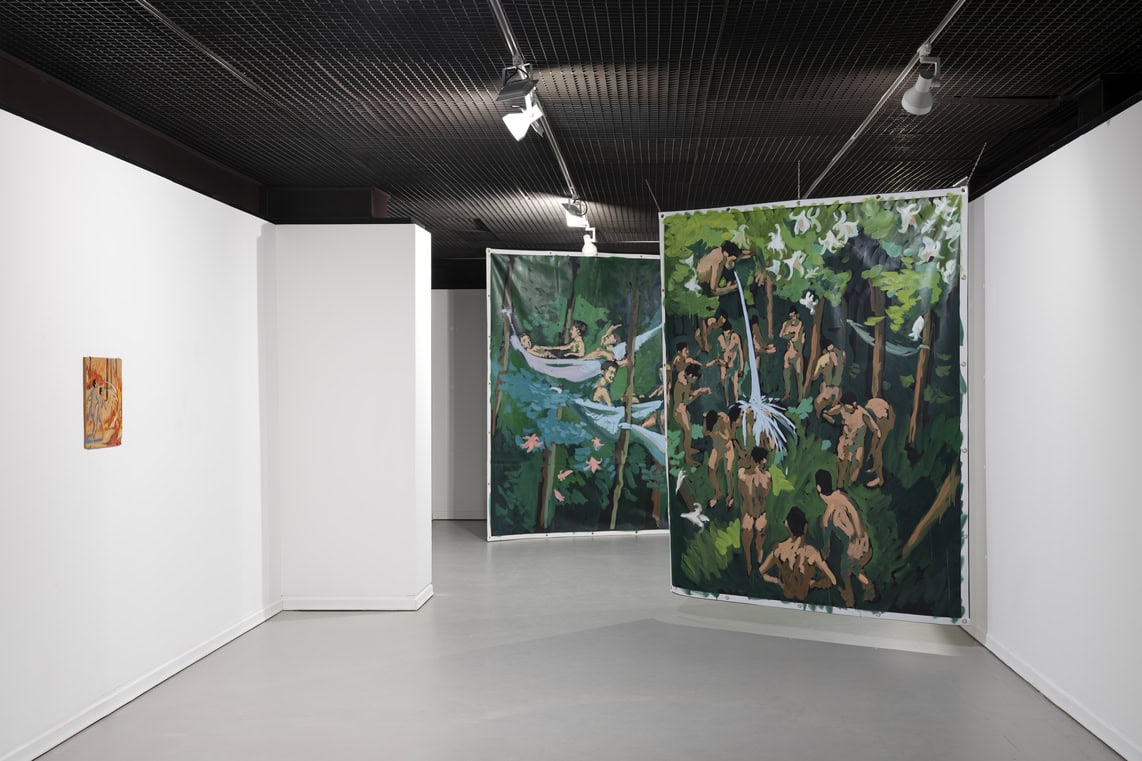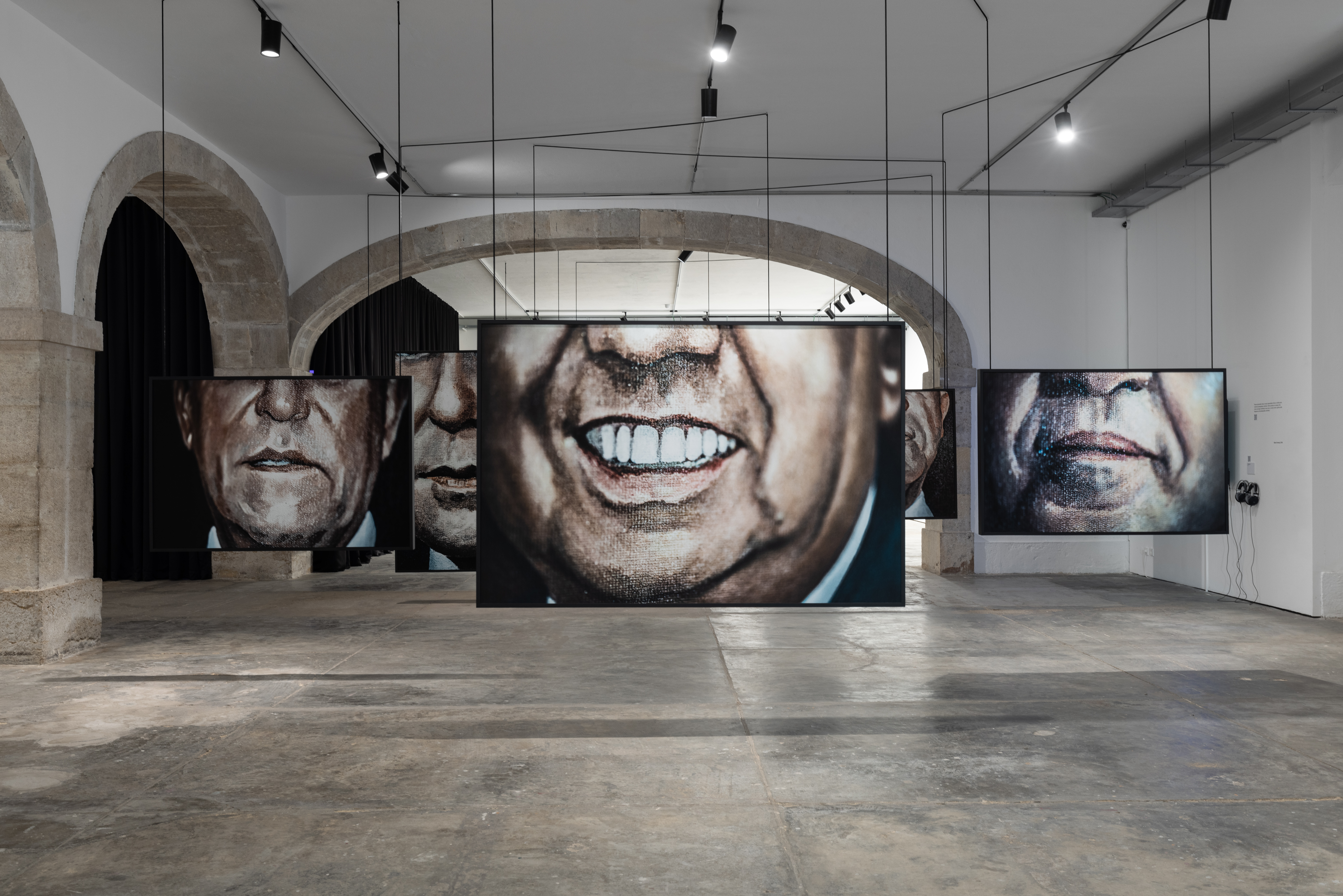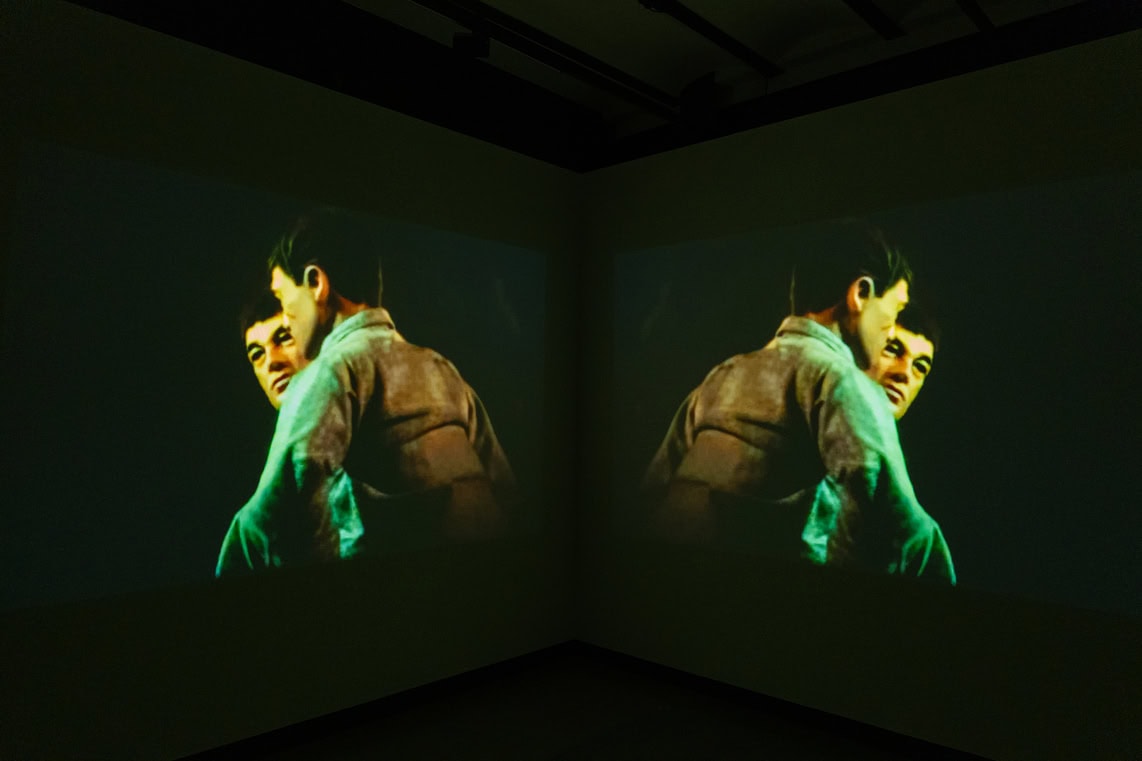Energy is a frequent force—inaugural, imperative, and terminal in any vital organism or virtual system. Once we acknowledge that the energy of existence is a vibratory energy[1], it may become more appropriate to consider it a frequency. It is that which guarantees the body or matter the fulfilment of its vital functions; moreover, it is the relational reciprocity sometimes between the parts that constitute a whole, an entity, sometimes between hetero-entities—an ecstatic encounter, a haptic crossing, a crossing that reverberates in an erratic rhythm. Pinheiro dos Santos’ principle of rhythmanalytic physics argues that matter exists in rhythm and through rhythm. This does not mean that matter has a vibration, but that matter exists while the vibration materializes. The regularity of frequency is, therefore, what makes matter. This is what seems to define Rui Moreira’s work, both in the creative process and in the final product.
Energy is a word that we associate today with productive technology, with mechanics — human inventiveness motivated precisely by the increase in production for the benefit of the reduction of fatigue. At the same time, we also associate precisely its opposite, with a vital rhythm[2] — not to say primordial, because it is not, although (post)modern acceleration strives to suggest this temporal separation — that is not exclusively of the order of action, but above all of reception, of crossing and being crossed. This crossing, consequent upon a cosmic (or hetrological) relationality[3], is articulated in a choreography of mutual gestures that call for contact with something vital, where the subject experiences a displacement that transports him outside himself, that places him in ekstasis, often associated with the idea of trance. Trance, in turn, seems to be associated with the notion of revelation, a state that unveils what was previously invisible. It is by entering this opening that we find the possibility of freedom, poiesis and creation. This perspective allows us to articulate this state of crossing (of crossing and being crossed) with artistic practice and aesthetic experience. Above all, it allows us to understand that this experimental and creative domain, predisposed by contact with the vital rhythm, does not break from a transcendent element, but rather an immanent one where consciousness comes into contact with a cosmic and heterological current of energy, which dissolves the fragmentation of the individual, in the same way that it dilutes the interval between the ‘I’ and the ‘other’ — human, or more-than-human — that is, between the ‘I’ and the ‘world’. Consequently, there is an entourage, a return, where distance is considered but annulled by brief ecstatic moments, and where the gesture that crossed us, that looked at us, is repeated, returning it with respect — the Latin verb spectare, to which the spectacle goes back, is a voyeuristic gaze, which lacks consideration of distance and return, respect (re-spectare). [4]The entourage distinguishes respectare from spectare. Now, contact with the vital rhythm, which allows the annulment of dualities through respectful encounter (crossing), is finally translated into a re-encounter with ‘I’, in a gesture of return that is in no way a regression, but an entry into a spiritual flow that overflows all domains of the sensitive and crosses them in the shared establishment “of a becoming — pure intensive energy that can approach trance.”[5]
This long prelude had the intent of introducing the work of Rui Moreira, who appears to fit into this process of heterological crossing, concerning both his creative methodology and the respective works, as well as their contemplative reception. At least this is what we can see in the anthological exhibition of the renowned Portuguese artist, at the Central Tejo, MAAT. In this, his first retrospective exhibition, he brings together more than 100 paintings and drawings, representative of a career spanning approximately two decades. Throughout the exhibition, we can see an aesthetic, theoretical and procedural cohesion, what João Pinharanda, the curator, refers to in the exhibition brochure as “personal mythography”. This aesthetic and visceral search and experience was what he sought to map in the first two paragraphs of this essay. A clear theosophical attitude is evident — from the figurative narratives to the abstract constructions where we recognize references to rituals and vital rhythms. These are not orientalist tourist fantasies, they are gestures resulting from a traveling life, and there is a contrasting difference: “while the tourist generally rushes to return home, after a few weeks or months, the traveller, who does not belong to this place any more than to the next, moves slowly, in periods of years, from one part of the world to another, and may not return”. [6]Rui Moreira returns but brings with him everything he’s been crossed through. He has travelled and pursued territories and rhythms that would allow and facilitate contact with vital impulses — understanding, I emphasize, that the city and modern, capitalist, liberal and individualist society inhibit and frustrate this attempt —, being able to participate, get involved and go through cathartic experiences, crossings. From the Festas dos Caretos, a carnival ritual, transmontano and pre-Roman, to the passage through the paintings of Vila Nova de Foz Côa; looking for traditional rituals displaced from Western ontologies — between Japan, Morocco, the Amazon and India, where it is crossed by the Kathakali performance.
In addition to a very individual language, it also remains faithful to the aesthetic and ethical axioms of each figure, landscape or ceremony — the surroundings are respectful, there is no artistic ego that haunts any portal, I mean, a referential work of the element or a timeless practice, pursued visually. This analogy between the canvas and the portal becomes tangible as we walk through the exhibition, as we understand the transversality of this situation, and it is related to Rui Moreira’s creative gesture. In most of the (usually) enormous compositions, the detailed and meticulous work that constitutes their execution is concretely perceptible; we imagine the extremely slow and painful process that is the basis of such complex and complete productions, with so many details and overlaps. One immediately understands the trance involved in the creative process. Obsessed and obstinate, traversed by the energy (I repeat, human and more-than-human) of vital rhythms: be they performative dances; desert dunes sculpted by extreme storm conditions; abundantly communicative vestments; hypnotic plants. In non-figurative productions, esoteric schemes are generated — meticulous, intense, visceral and overlapping, iterating the previous process — where there is no doubt about the synergy of the portal-screen and its archaeology, which when mapped with a gaze allows us to go through the same trance present in the artist’s process at work.
In conclusion, the chronological disorganization, internationality and interspatiality of the motifs — vital axes of Moreira’s work — transgress temporal structures and traverse past, present and future in the vitality of the gesture of crossing, always contemporary to the one who makes the courtesy. Thus, repetition and reproduction become the key to trance in kinesis: “an after is an after that comes after an after that comes after an after… “After” is the figure of a repetition that repeats itself.”[7]
On the lower floor of the Tejo Central, Ana Léon, in Gestos, shows us another (virtual) energy, other rhythms, another journey, one that is accomplished with the help of mechanics and technology, that of cinema, and that allows the (post)modern subject — follow me in proposing this theory, risked by Salomé Lopes Coelho — to access a “visuality that was previously hidden” through the mediality of the cinematographic gesture. The researcher also tells us that the cinematographic gesture emerged side by side with scientific investigations that sought to understand the human gesture, i.e., the movement of the body in space and time.
Léon presents six stop motions, spread across six rooms, which project short videos of two or three minutes in a loop where nothing happens other than the repetitiveness of the gesture: “the gesture is neither a means nor an end; rather, it is the exhibition of a pure mediality, the making visible of a means as such, in its emancipation from all purpose. (…) It conveys meaning, but it is not the meaning itself: ‘it has precisely nothing to say because what it shows is the being-in-language of human beings as pure mediality’.[8] It seems that this is exactly what the artist offers us — the possibility of re-understanding the moving image as a mediator of the gesture, which, in turn, is pure mediality in itself. Without a room sheet, speech or explanation, we follow a sequence of short videos, where a group of Action Man dolls, choreographed by Léon, endlessly repeat the same gesture — which brings us closer to this reflection on the “endless medium” of the human gesture and the cinematic gesture. [9]Being assigned to one gesture per room, we follow a sequence (which does not require linearity) that unfolds in the description of the gesture staged — the only information provided by the artist —: Tomber, Se Retourner, Se regarder, Percevoir, Se Dédoubler, Avancer. What all these words have in common is the fact that they are related to ‘movement’, whether physical or psychic. Furthermore, the prefix ‘se’, in some of them, reveals to us the cohesion of what seemed dispersed — the verbs are associated, above all, with a movement of self-awareness, in a playful experience that starts from the pure mediality of physical movement to the “hitherto hidden visuality” of the ‘self’, through the cinematic gesture.
Transe, by Rui Moreira and Gestos by Ana Léon are on display at Central Tejo, at MAAT, until June 2, 2025.
[1] According to Lúcio Pinheiro dos Santos (1889-1950), responsible for the first theory of rhythmanalysis.
[2] Coelho, S. L. (2020). O gesto da travessia e o contacto com o ritmo vital: Sobrevivências do ekstasis no cinema. Doctoral Thesis in Artistic Studies, Faculty of Social Sciences and Humanities, Universidade Nova de Lisboa.
[3] Frank heterology is not a projection of otherness, nor is it an ontological embodiment — but a collective and cooperative imagination, liminal and traversed, that is, a hetero-traversal composed in the plural. Or, in Bataille’s words, heterology refers to the concept of dépense improductive (unproductive energy), i.e. everything that is ignored by science. From there he constructs his ‘science of the heterogeneous’, an approach that challenges the abstract method of science, which presents ontology as fixed and homogeneous.
[4] Han, B. (2018). No Enxame: Perspectivas do digital. Tard. Lucas Machado, Petrópolis: Editora Vozes, p.13.
[5] ) Gil, J. (2018). Caos e Ritmo. Lisboa: Relógio D’Água, p. 214.
[6] Bowles, P. (1990). The Sheltering Sky. Harper & Row, p. 7.
[7] Schuback, M. S. C. (2020). Time in exile: In conversation with Heidegger, Blanchot, and Lispector. State University of New York Press, p.69.
[8] Agamben, G. (2018). Por uma ontologia e uma política do gesto, Caderno de leituras N.º 76. Belo Horizonte: Chão da Feira, p.3 e 58.
[9] It is important to mention here the slow and time-consuming work that was involved in the production of these stop-motions; at least these six were produced over a period of 10 years (2014-2024). The gesture that is repeated, the artist’s gesture, is that of crossing — the choreography involved in the production of these works, linked to an (artistic) practice of analysing rhythms, spaces and times, can formulate a crossing, what would be the mobility of the vision of the ‘I’ outside of itself, towards ‘itself’, as staged with the puppets.


